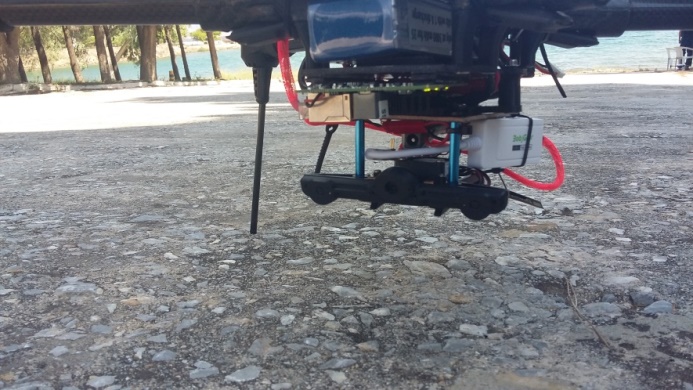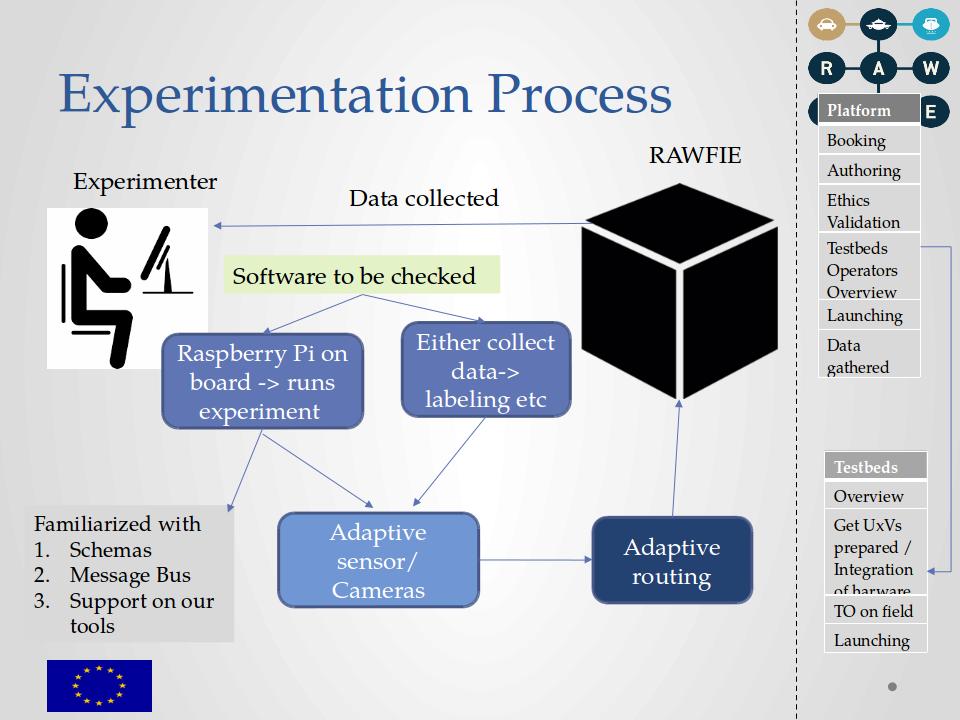Experimenters of testbed and UxV resources can be categorized in three main groups based on the experiments' type:
- Experimentation of UxVs hardware components:
- Integration of new hardware to the vehicles of an existing testbed is required by most of the experimenters. New hardware is represented by new sensors, alternative communication interfaces for networking-related experiments, supplementary computer, etc.
- Experimentation of UxVs software:
- Experimenters need to test network algorithms based on different allocation of devices in space. This type of experiments handle UxVs as Access Points that are enhanced with mobility.
- Experimentation with dynamic re-routing of UxVs:
- Experimenters need to monitor the camera or sensor feedback of UxVs in space and re-locate them dynamically based on events (like fire detection) or telemetry statistics.
Once experimenters have a clear picture on which category of experiments they want to run, they should get in contact with the RAWFIE federation to be assisted for the preparation of the experiment.
New experimenters shall clarify the experiments or the problem they would like to solve to the responsible contact point. Then together they would define
- In which Testbed they would like to run the experiments
- With what type of devices
- What will be the hardware mounted (if it is needed)
Afterwards, an account is created in order to access web portal and administration tools:
like Redmine, Gitlab and Owncloud. Inside Owncloud, experimenters will find a folder which contains a tutorial about the use of the platform.
In case that experimenters need to consume or produce messages from/to the Message bus (for instance if they integrate their own hardware to RAWFIE UxV’s), specific guidelines are given together with two examples of adapters based on different technologies (Java, Python) which are available in gitlab. For safety reason all the adapters that are developed by experimenters are tested prior to a simulated testbed of UAVs or USVs.
For hardware integration such as extra sensors or communications means, specific dimensions and operating guidelines shall be submitted to the RAWFIE platform manager who will advise the best integration solution. For instance, the image below represents the integration of a snapdragon computer on a RAWFIE UAV.


Experimenters can book their resources in the permitted timetable of RAWFIE booking service and start write their experiments. Each experiment is documented in advance, and experimental resources booked, through an on-line system and cannot be conducted until the proposed experiment has been approved by the ‘Ethics Committee’. The launching day experimenter can either launch manually the devices or schedule the launching time beforehand. In case of UAVs, qualified pilots must be supplied by the testbed operators and/or the University of Athens.

